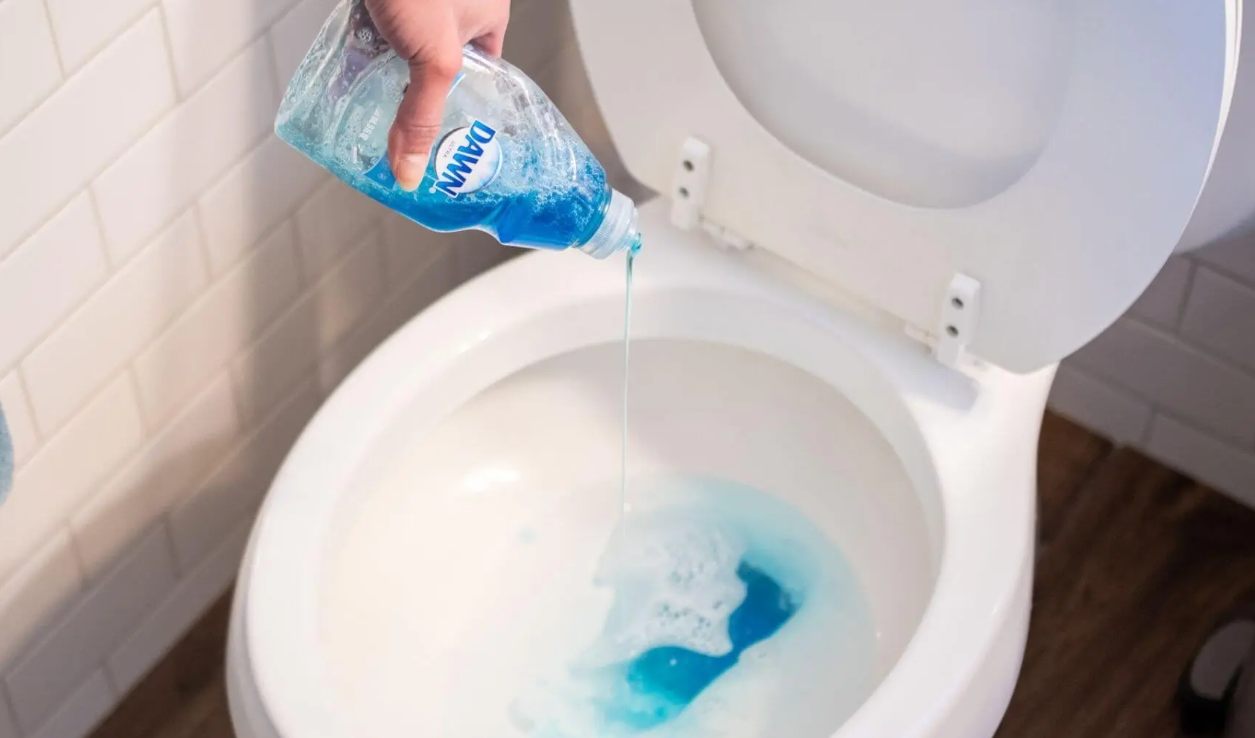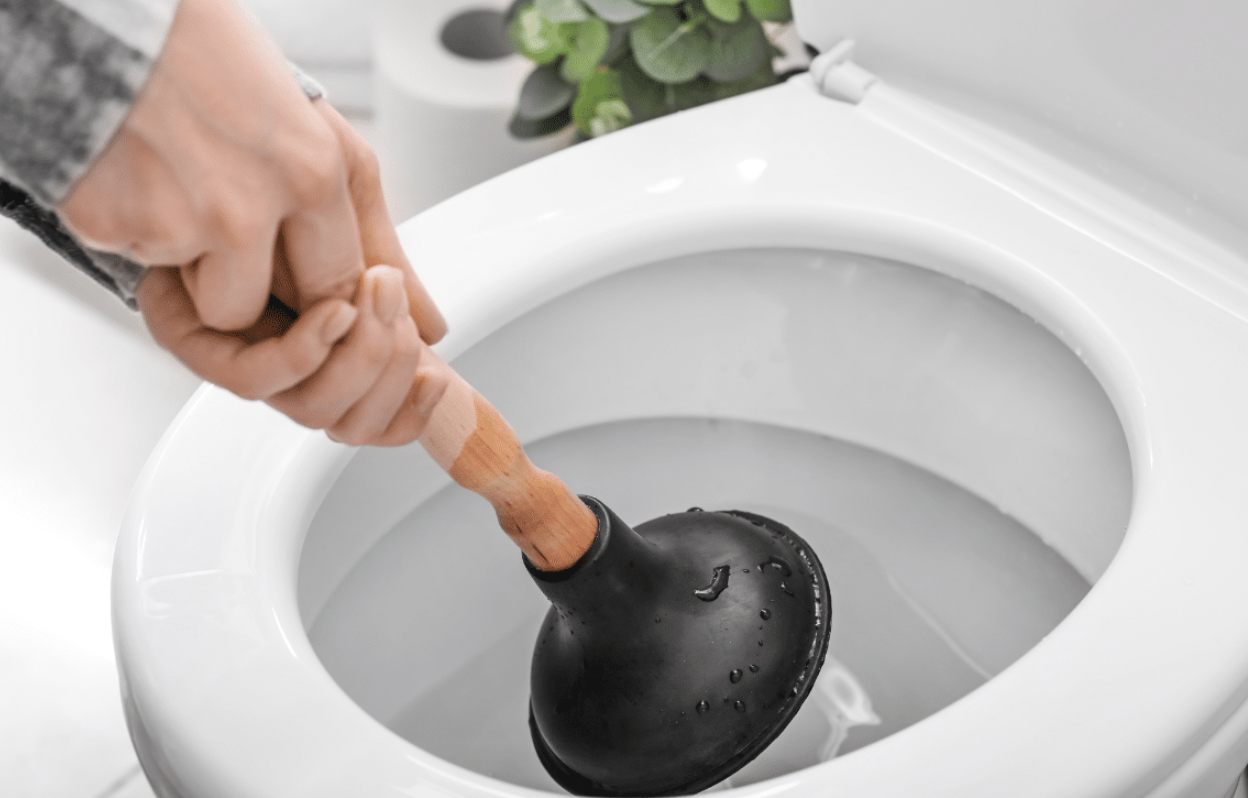How to Unclog a Toilet Fast : A Step-by-Step Guide
Blocked toilets are some of the most unwieldy and irritating household troubles. They’re embarrassing, smelly and even can be a source of costly plumbing work if not caught early. Fortunately, if you’re well-equipped with the proper tools and techniques, you can flush a toilet in no time. I’m going to show you the exact procedure, some tips from the pros, and a bit of my experience to get you through this challenge successfully.
Understanding the Problem
To get a handle on how to fix toilets, here’s why they clog the first place. Common causes include:
Sweeping dirty things: Wet wipes, paper towels, sanitary napkins or extra toilet paper block the drain.
Bad plumbing installation: Squinty pipes or wrong angles encourage clogs.
Toilets with low flush: Some older low-flow toilets do not have the right pressure to collect waste.
Hard water clogs: With time mineral build-up narrows pipes making the water less efficient.
This root cause will help you avoid clogging in the future and select the right unclogging method.

Prepare: Be Relaxed, and Gather Supplies.
There’s nothing more terrifying than a blocked toilet, when water starts pouring dangerously close to the edge. Breathe and do this:
Restore water shutoff: Locate the shutoff valve behind the toilet and turn it counterclockwise to prevent flooding.
Measure up: Check if the clog is only partially (water slowly runs out) or completely (the water drains out).
Get tools you need: Plunger, toilet auger, rubber gloves, bucket are common items you need. If you lack these items, then home remedies are sometimes okay.
The Plunger Method: A Timeless Solution.
- A plunger is the toilet unclog tool you should have on hand in every home. This is how you can get good use out of it:
- Select the right plunger: A flange plunger (a plunger with a rubber lip) works best on a toilet because it seals better.
- Seal it: Dip the plunger in water and place it on the drain opening. Make sure to fill the bowl with water enough to cover the plunger head (this will boost suction).
- Splash hard: Stubborn, forceful slaps to create pressure that breaks the clog. Begin gently so you don’t splash and up as necessary.
- Evaluate: If it has passed after a few tries, flush the toilet. : If the clog remains, repeat.
Layla Armstrong, as the author of this article and a home management expert, says :
Tips: I have found that sometimes a little dish soap in the bowl can lubricate the pipe so that the clog can be broken down. I have time-saved a couple of times with this trick.

The Hot Water and Dish Soap MethodThe Hot Water and Dish Soap Method.
This is life-saving if you don’t have a plunger or the clog is quite small. It dissolves the blockage by soothing and dissolving it.
Water — Boil (but don’t boil) a bucket of water. The porcelain might split when boiled, so beware.
Sprinkle dish soap: Pour a ladleful of dish soap in the toilet bowl to serve as lubricant.
Fill the toilet with water: Pour the hot water slowly, from waist-level, into the toilet. Force and heat will clear the blockage.
Bleach a minute and flush: Wait 10-15 minutes for the solution to dry before flushing.
An Experiment: I tried this method once at a rental property without tools and it was an absolute godsend. It’s a matter of time — heat and soap working in tandem to unclog the congestion.
Use a Toilet Auger to Remove Tender Clogs
You’ll want to use a toilet auger (or drain snake) if you have more severe clogs. This tool can reach all the way into the pipe to unclog clogs.

Plug the auger: Plug the auger’s angled end into the drain hole.
Pull on the handle: Turn the handle counterclockwise to pull the cable into the pipe. The auger will split or catch the clog.
Pull out and rinse: As resistance begins to ease pull back the cable and wipe away the sludge.
Drain and check: Scan the toilet to make sure the clog is completely cleared.
Expert Tip: If you don’t have a toilet auger yet, you can get one at the hardware store for cheap. Try investing in one in case of emergencies.
Baking Soda and Vinegar: An All Natural Choice.
This green remedy works well for smaller clogs from organic debris.
Put baking soda in the toilet bowl: Pour about a cup of baking soda into the toilet bowl.
Pour in vinegar: Pour a cup of white vinegar slowly into the bowl. The mix will bubble and dissolve the clog.
Flush: Sit the solution for 20-30 minutes and flush.
Warning: Do not do this if you have used a commercial drain cleaner before as the chemical reaction may release toxic fumes.
You can also read these articles on our website:
- How to Get Rid of Musty Smell Under the Sink : A Comprehensive Guide
- How to clean a couch that smells
When to Call a Professional
Sometimes a clog is too bad for do-it-yourself, perhaps because of roots or broken pipes. Call a plumber if:
Backs up into other drains (a sewer line failure).
You’ve tried different things but nothing works.
It clogs again and again no matter what you do.
A skilled plumber will use hydro-jetters and cameras to make complex repairs.
Preventing Future Clogs
Prevent is the best medicine. Here are some tips to prevent your toilet from getting blocked:
Inform your family: Remind members not to flush anything other than toilet paper.
Toilet Paper Limit: Recommend using as little toilet paper as necessary.
Place a toilet-friendly trashcan nearby: Keep a little bin nearby for wipes and feminine hygiene products.
Prevent accumulation : Always flush your toilet and pipes every couple of months.
Private Practice: Flush pipes once a month with a bucket of warm water, I find it
keeps them clear. A small precaution that can save you from the hassle of clogs.
Final Thoughts
Unclogging a toilet needn’t be a frightening experience. Keep cool, carry the right equipment, and perform these steps and you can clear the majority of clogs in no time. Just don’t forget to be proactive and stop if need be, and seek professional help when needed. If you do proactive planning with these simple suggestions, it’s a more hassle-free home and your peace of mind.
The most obstinate toilet clog can be solved with a bit of preparation and some knowledge.
FAQ :
- How do you unblock a badly blocked toilet fast?
To unblock a badly blocked toilet quickly, start by using a plunger. Ensure a tight seal around the drain and push firmly to create suction. If that doesn’t work, try a toilet auger (plumber’s snake) to break up or remove the blockage. Avoid flushing repeatedly, as this can cause overflow. - What is the strongest thing to unclog a toilet?
The strongest tool to unclog a toilet is a toilet auger or plumber’s snake, which can reach deep into the pipes to break up or remove stubborn blockages. For chemical solutions, a heavy-duty drain cleaner can work, but use it sparingly and cautiously to avoid damaging pipes. - What not to do when unclogging a toilet?
Do not use excessive force with a plunger, as it can damage the toilet. Avoid pouring boiling water into the toilet, as it can crack the porcelain. Do not mix chemical drain cleaners, as they can create toxic fumes. Also, avoid flushing repeatedly, as it may cause overflow. - How to unblock a badly blocked toilet poop?
For a toilet blocked by poop, use a plunger first to create suction and dislodge the blockage. If that fails, try a toilet auger to break it up. Avoid using chemical cleaners, as they may not work effectively on organic waste. If all else fails, call a professional plumber.
Article source:

Is it safe to use boiling water to unclog a toilet, or could it damage the porcelain?
It’s best to use hot water rather than boiling water, as boiling water can crack the porcelain. Pouring hot (not boiling) water into the toilet can help dissolve the clog without causing damage.
Can I use chemical drain cleaners to unclog my toilet, or are there safer alternatives?
It’s generally advisable to avoid chemical drain cleaners in toilets, as they can damage pipes and are harmful to the environment. Safer alternatives include using a plunger, a toilet auger, or a mixture of baking soda and vinegar.
How effective is the baking soda and vinegar method for unclogging toilets, and what is the correct ratio to use?
Hi David! The baking soda and vinegar method can be effective for minor clogs. A common ratio is one cup of baking soda followed by two cups of vinegar. Allow the mixture to fizz for about 30 minutes, then flush with hot water.
What should I do if plunging doesn’t resolve the toilet clog?
If plunging doesn’t work, you can try using a toilet auger (also known as a plumbing snake) to break up the clog. Alternatively, methods like hot water with dish soap or the baking soda and vinegar mixture can be attempted. If all else fails, it may be time to call a professional plumber.
Are there any preventive measures to avoid future toilet clogs?
Is it advisable to use a wire hanger to unclog a toilet, and if so, how should I do it safely?
Using a wire hanger can be a last resort if you don’t have a toilet auger. Straighten the hanger, leaving a small hook at the end, and carefully insert it into the toilet drain to gently dislodge the clog. Be cautious to avoid scratching the porcelain.
How can I prevent water overflow when attempting to unclog the toilet?